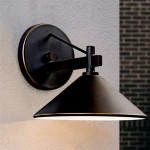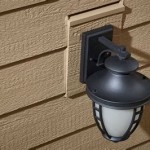What Is The Best Paint To Use For Outdoor Wood Furniture?
Selecting the optimal paint for outdoor wood furniture is a crucial decision that directly impacts the furniture's longevity, appearance, and resistance to environmental stressors. The best paint will not only enhance the aesthetic appeal of the furniture but also provide a robust protective barrier against moisture, ultraviolet (UV) radiation, temperature fluctuations, and biological threats like mold and mildew. Understanding the various paint types available, their specific properties, and the environmental context in which the furniture will reside is paramount in making an informed choice.
The degradation of outdoor wood furniture is largely attributed to the relentless effects of weather exposure. Rain and humidity can penetrate the wood, causing it to swell, warp, and eventually rot. Sunlight, particularly UV radiation, can cause the paint to fade, chalk, and crack, compromising its protective abilities. Moreover, temperature swings can induce expansion and contraction within the wood, leading to stress and potential damage. Therefore, the chosen paint must be formulated to withstand these challenges and maintain its integrity over time.
Several factors should be considered when selecting the best paint for outdoor wood furniture. These include the type of wood, the desired finish, the level of maintenance required, and the specific environmental conditions of the furniture's location. Softwoods, such as pine and cedar, tend to absorb more moisture and require paints with superior water resistance. Hardwoods, such as teak and mahogany, are naturally more durable but still benefit from a protective coating to prevent weathering and maintain their appearance. The desired finish, whether it be opaque, semi-transparent, or clear, will also influence the selection of paint.
Understanding Paint Types and Their Properties
Several types of paint are commonly used for outdoor wood furniture, each with its own set of advantages and disadvantages. These include oil-based paints, latex paints, acrylic paints, and specialized exterior wood stains and finishes. Each paint type differs in its composition, application characteristics, performance, and environmental impact.
Oil-based paints: Oil-based paints have been a traditional choice for outdoor applications due to their excellent durability and resistance to moisture. They form a hard, durable finish that is less prone to chipping and scratching compared to some other types of paint. Oil-based paints also offer superior adhesion to bare wood, providing a strong foundation for protection. However, oil-based paints have several drawbacks. They typically require more time to dry completely and emit volatile organic compounds (VOCs), which can be harmful to human health and the environment. Cleanup requires solvents like mineral spirits, adding to the environmental concerns. Furthermore, oil-based paints tend to become brittle over time and are more susceptible to yellowing, especially in lighter colors.
Latex paints: Latex paints, also known as water-based paints, have become increasingly popular for outdoor applications due to their ease of use, low VOC content, and excellent flexibility. They dry quickly, making them easier to apply and reducing the risk of dust and debris contamination. Latex paints are also more resistant to cracking and peeling than oil-based paints, as they can expand and contract with the wood's natural movement. Cleanup is simple, requiring only soap and water. While latex paints offer many advantages, they may not provide the same level of durability and water resistance as oil-based paints, particularly in harsh weather conditions. A high-quality exterior-grade latex paint with proper priming is essential for optimal performance.
Acrylic paints: Acrylic paints are another type of water-based paint that offers excellent adhesion, durability, and color retention. They are known for their resistance to fading and chalking, making them a good choice for outdoor furniture that will be exposed to direct sunlight. Acrylic paints also provide a flexible finish that can withstand temperature fluctuations without cracking or peeling. They are available in a wide range of colors and finishes, allowing for greater design flexibility. While acrylic paints are generally more expensive than latex paints, their enhanced performance and longevity can make them a worthwhile investment.
Exterior wood stains and finishes: Exterior wood stains and finishes are designed to enhance the natural beauty of wood while providing protection against the elements. They are available in various formulations, including penetrating oil stains, solid color stains, and clear finishes. Penetrating oil stains soak into the wood, highlighting the grain and providing water resistance. Solid color stains offer a more opaque finish that can hide imperfections and provide greater color uniformity. Clear finishes provide a transparent protective layer that allows the natural wood to show through. The choice between these options depends on the desired aesthetic and the level of protection required.
Factors Influencing Paint Performance
The performance of any paint, regardless of type, is influenced by several factors beyond the paint itself. Proper surface preparation, priming, application techniques, and environmental conditions all play a critical role in ensuring a long-lasting and durable finish. Failure to address these factors can lead to premature paint failure, negating the benefits of even the highest quality paint.
Surface preparation: Thorough surface preparation is essential for ensuring proper paint adhesion and preventing future problems. This involves cleaning the wood to remove any dirt, grease, mildew, or loose paint. Sanding the wood to create a smooth, uniform surface is also important. Any existing damage, such as cracks or rot, should be repaired before painting. For previously painted surfaces, it may be necessary to scrape or sand away the old paint to create a clean, sound surface for the new paint to adhere to.
Priming: Priming is a crucial step in the painting process, especially for bare wood. A primer acts as a bonding agent between the wood and the paint, improving adhesion and preventing the paint from being absorbed into the wood. It also helps to seal the wood, preventing moisture from penetrating and causing damage. Primers are available in various formulations, including oil-based, latex, and acrylic. The choice of primer should be based on the type of paint being used and the specific characteristics of the wood. Tinted primers can also be used to improve the coverage and color consistency of the topcoat.
Application techniques: The application technique can significantly affect the appearance and durability of the paint finish. Paint can be applied using a brush, roller, or sprayer. Brushing is often preferred for detail work and smaller surfaces, while rolling is more efficient for larger, flat surfaces. Spraying can provide a smooth, even finish but requires more skill and equipment. Regardless of the application method, it is important to apply thin, even coats of paint, allowing each coat to dry completely before applying the next. Avoid applying paint too thickly, as this can lead to sagging, wrinkling, and slow drying.
Environmental conditions: The environmental conditions during painting can also affect the outcome. It is best to paint on a dry, mild day with temperatures between 50°F and 85°F (10°C and 29°C). Avoid painting in direct sunlight, as this can cause the paint to dry too quickly and lead to blistering or cracking. High humidity can also interfere with the drying process, causing the paint to remain tacky and attract dirt. It is also important to protect the painted surface from rain and dew until it is completely dry.
Selecting the Right Paint for Specific Needs
Given the variety of paint types and factors that influence their performance, selecting the right paint for specific needs requires careful consideration. The type of wood, the desired aesthetic, the level of maintenance required, and the environmental conditions should all be taken into account. For example, furniture made from softwood that will be exposed to harsh weather conditions may require a high-quality oil-based paint with a durable primer. Conversely, furniture made from hardwood that will be used in a sheltered location may be suitable for a latex or acrylic paint with a less demanding primer.
For those seeking a natural look, exterior wood stains and finishes offer a way to enhance the wood's beauty while providing protection. Penetrating oil stains are ideal for highlighting the grain and providing water resistance, while clear finishes offer a transparent protective layer. Solid color stains provide a more opaque finish that can hide imperfections and offer greater color uniformity. When selecting a stain or finish, it is important to choose a product that is specifically designed for outdoor use and contains UV inhibitors to prevent fading and chalking.
Ultimately, the best paint for outdoor wood furniture is the one that provides the optimal combination of protection, durability, and aesthetic appeal for the specific application. By carefully considering the factors discussed above and consulting with a paint professional, it is possible to select a paint that will enhance the beauty and longevity of outdoor wood furniture for years to come.
Regular maintenance is also crucial for preserving the paint finish and extending the life of the furniture. This includes cleaning the furniture regularly to remove dirt and debris, touching up any areas where the paint has chipped or peeled, and reapplying a fresh coat of paint every few years as needed. By following these maintenance practices, it is possible to keep outdoor wood furniture looking its best and protected from the elements.

15 Tips For Painting Outdoor Furniture To Last Longer

How To Paint Exterior Wood Furniture A Turtle S Life For Me

Rainbow Wooden Outdoor Patio Furniture Makeover With Spray Paint Mimosas Motherhood

Painting The Outdoor Furniture How I Got That Barnwood Color

How To Paint Outdoor Wood Furniture And Make It Last For Years

15 Tips For Painting Outdoor Furniture To Last Longer

How To Paint Outdoor Wood Furniture And Make It Last For Years

How To Paint Outdoor Furniture Style At Home

Best Paints To Use For Outdoor Furniture Accessories And Pots

Painting Outdoor Furniture With Chalk Paint At Home Ashley
Related Posts







